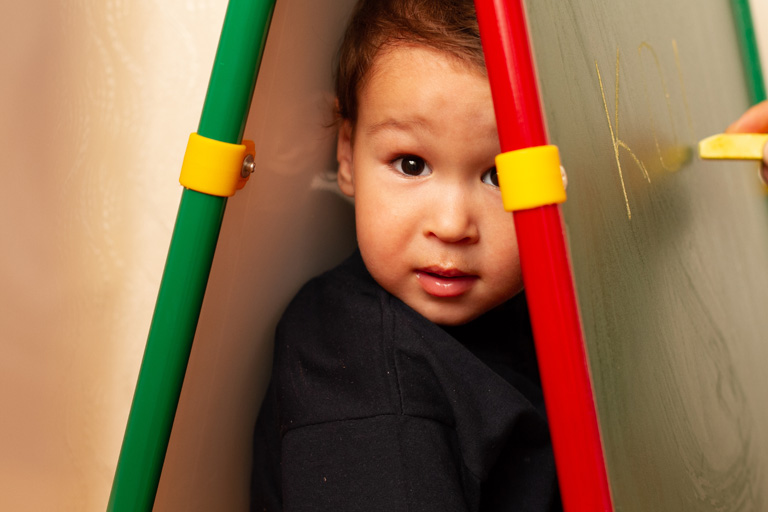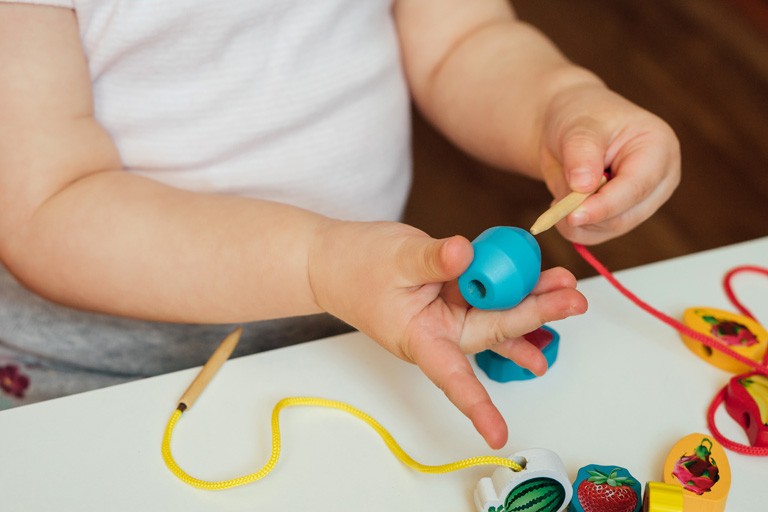
7 Parenting Tips on Building Self-Esteem and Self-Reliance in Young Children
October 22, 2018
What Are the Warning Signs of Autism, and Why Should ALL Parents Be Aware of Them?
October 24, 2018By Jennifer Smith, BA, MA, TSVI, TEIS Teacher of Students with Visual Impairments
One of my baby’s eyes seems to wander, is this a problem? My baby squints at toys, do I need to worry? When I look down at my baby, he doesn’t look back at me. What’s up with that?
As parents, we always worry about unusual behaviors our children demonstrate. Sometimes quirky behavior is just that, a little odd thing children try out because they are discovering how their bodies work, sometimes it’s part of appropriate development, and sometimes it’s a good idea to get a doctor’s opinion. Let’s look at some signs that might indicate a concern with vision that would be best addressed by a doctor.Eye movement disorders are one of the most common concerns treated by pediatric ophthalmologists. Sometimes parents notice their baby has an eye that wanders toward the child’s temple (exotropia) or toward the child’s nose (esotropia). In a young baby, this infrequent misalignment of the eyes, or eyes that are not moving together, is fairly common. Babies learn to control the muscles that move their eyes in the same way they learn to control their fingers and toes; through trial and error. As your baby matures, she will develop more refined motor control of her eyes, and her eyes should consistently track together by about four months of age. If you notice that one or both of your baby’s eyes are consistently misaligned, check with your doctor.
Visual acuity, or the ability to see things clearly, develops slowly during the first two years of baby’s life. When we think of typical vision, everyone imagines the eye chart and a doctor saying you have “twenty twenty vision.” What a 20/20 vision measurement means is that you can see the same things at 20 feet that an average Joe can see at 20 feet. At birth, your baby has an average visual measurement of 20/400, which means your baby can see at 20 feet what an a typical adult sees at 400 feet. By about the end of the first year, your baby’s acuity should approach 20/20 – 20/60. Newborns see best at 8-10 inches, about the distance of your face to your baby when you hold him close to your chest. Given a baby’s need to be close and having vision that is not particularly sharp, an occasional squinty look is not unheard of. Additionally, babies prefer low lighting and are sensitive to bright lights, so some situational squinting is totally typical. If your older baby consistently squints, brings toys very close to his face to examine, frequently trips over or runs into obstacles, or demonstrates an aversion to going outside on bright sunny days, check with your doctor.
One of the prized moments for every parent is looking into their baby’s eyes with love, and having baby look back. It can be very disconcerting to watch your baby’s eyes look away from you, rove around the landscape, or jiggle restlessly. Before you start to worry, consider the big picture. Were you standing in front of a bright light or the sun, so that there was too much light for your baby to process, making her look away? Was the light behind you, making you nothing but a shadowed outline, and not interesting enough for baby to look at? Was there competing sensory input – other loved ones visible nearby, sounds of the bottle warming in the microwave, or smells of lunch being prepared, or all of the above? Any of these circumstances will affect your baby’s ability to attend to you visually. If you notice that your baby never or rarely seems to look at you, other people, or objects presented within arms’ reach, check with your doctor. If your baby’s eyes seem to move uncontrollably side to side, or more rarely, up and down, or his eyes seem to move without resting on anything, share these concerns with your doctor.
There are many visual behaviors that are developmental and not concerning, but if you ever feel worried about your child’s vision, don’t hesitate to ask your doctor or eye care specialist. Some visual disabilities have the potential to be improved with early intervention. Premature babies, particularly those with any type of brain trauma, can be predisposed to Neurological Visual Impairment (commonly known as CVI) which has been shown to improve with training and support. Another eye diagnosis that is rare but is sometimes spotted by parents is retinoblastoma, which parents notice as a white pupil, rather than the common “red eye,” in photographs. Medical intervention is necessary to resolve this disease, but response to treatment is good. Finally, remember, you know your baby best, and if you have a vision concern, talk to your doctor. If needed, early intervention providers such as TEIS can support your family with appropriate vision services to improve and make accommodations for any visual impairment.
Source: Ferrel, Kay Alicyn, Reach Out and Teach: Helping Your Child Who is Visually Impaired Learn and Grow, AFB Press, copyright 2011, pgs 71-74


 Send to a friend!
Send to a friend!


